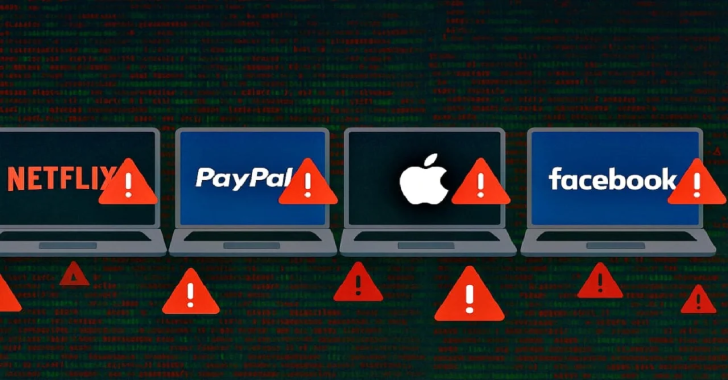Have you ever filled out a form on a website — maybe a login page or a search bar?
That tiny box where you type something can sometimes become the backdoor for hackers.
This is where SQL Injection, or SQLi, comes into play.
SQL Injection is a type of cyber attack where a hacker “injects” harmful code into a website’s database query. Instead of giving normal input, the attacker enters special code that tricks the database into doing something it shouldn’t — like giving away your personal data.
How Do Hackers Exploit These Vulnerabilities?

Let’s take a login form as an example.
Normally, the system checks:
SELECT * FROM users WHERE username='your_input' AND password='your_input';But what if someone enters:
OR 1=1 --Now the query becomes:
SELECT * FROM users WHERE username='' OR 1=1 --' AND password='';That OR 1=1 part always returns true. The -- tells the system to ignore the rest. As a result, the attacker logs in without knowing any real username or password.
This trick works because the application blindly trusts user input — and that’s where the danger lies.
What Can Happen If a SQL Injection Attack Succeeds?
The consequences? They’re not just technical — they’re real-world nightmares.
Here’s what could happen:
- User Data Theft: Hackers can steal email addresses, phone numbers, and passwords.
- Full System Access: In worst cases, attackers can gain control over the entire database.
- Website Defacement: Some attackers might change or delete website content.
- Financial Damage: Businesses may lose money, customers, and reputation.
In fact, big companies like Yahoo, LinkedIn, and even NASA have faced attacks like these in the past
“Don’t Let One Line of Code Ruin Everything”
SQL Injection is sneaky.
It doesn’t need fancy tools. Just a little line of clever code can tear open your system’s doors.
But the good news? It’s totally preventable — and in the next sections, we’ll show you exactly how to lock those doors tight.
Hidden Danger Zones: Where SQL Injection Really Begins”
SQL Injection doesn’t come out of nowhere.
It only works when the app unknowingly trusts input from users — and plugs it directly into a SQL query without checking or protecting it.
Let’s break down the most common spots where these security holes pop up.
2.1 Input Fields – The Front Door Hackers Love
This is the #1 place hackers start.
Think login forms, signup boxes, search bars, comment fields — basically any text field where users type something.
If your app takes that input and runs it straight into a SQL query?
Boom. That’s a wide-open door for injection.
2.2 URLs – More Than Just Links
Sometimes, websites pass user data through the URL. For example:
https://example.com/product?id=42
If that id=42 value is used directly in a SQL query without checks, an attacker might change the link to:
https://example.com/product?id=42 OR 1=1That small change can let them bypass security — or worse, dump your database.
2.3 Cookies – The Silent Saboteurs
Cookies store info in the user’s browser — like login sessions or preferences.
Some developers don’t realize that cookies can be edited by the user.
If your app takes cookie values and inserts them into SQL queries without validating them?
That’s another hole wide open for attack.
2.4 Server Variables – The Overlooked Risk
Things like HTTP_USER_AGENT, REMOTE_ADDR, and HTTP_REFERER may look harmless.
But they’re also user-controlled inputs.
If your app logs these values or uses them in queries — say, for analytics or admin dashboards — they must be treated just like any other untrusted data.
2.5 Rule of Thumb: Any User Input is a Risk
If there’s one thing to remember from this section, it’s this:
Any data that comes from outside your application is a potential threat.
Even if it seems simple or hidden — if it reaches a SQL query, it must be treated with caution.
“Think Like a Hacker, Code Like a Pro”
It’s easy to assume that only forms or obvious inputs are risky.
But hackers look for anything they can manipulate. That includes cookies, headers, and even hidden fields.
In the next section, we’ll look at how to block these threats before they ever reach your database.
Bulletproof Your Database: The Smartest Ways to Stop SQL Injection”
SQL injection is dangerous — but the good news?
You can prevent it.
This section breaks down the core defense techniques that every developer, security analyst, and IT pro should understand and use regularly.
Let’s walk through them in a simple, step-by-step way.
3.1 Parameterized Queries (Prepared Statements)
“The #1 Weapon Against Hackers — Use It Right!”
If there’s one tool you must use to stop SQL injection, it’s this: parameterized queries (also called prepared statements).
These tell the database to treat user input as data, not code.
Instead of sticking user input directly into the query, placeholders are used.
Example (in simple pseudo-code):
SELECT * FROM users WHERE username = ? AND password = ?The actual values (username, password) get filled in separately from the query structure.
That means an attacker can’t break the query, even if they try to inject SQL.
3.2 Input Validation

“Don’t Trust, Always Verify: Clean Your Data First”
Validating input is like giving every piece of data a security check before letting it inside.
For example, if you’re expecting a number, you should only allow numbers — not letters, symbols, or anything else.
✅ Whitelisting vs. ❌ Blacklisting
- Whitelisting: Only allow known safe values (e.g., only digits for a phone number).
- Blacklisting: Block known bad stuff (e.g., SQL keywords).
Whitelisting is much safer. It’s like allowing only invited guests into your home — rather than trying to stop every possible intruder.
Other checks to apply:
- Data type (e.g., string, integer)
- Length (e.g., max 30 characters)
- Format (e.g., email should look like
example@domain.com)
But input validation alone isn’t enough!
It’s great as the first line of defense, but don’t rely on it alone.
Hackers are clever — they’ll find ways to sneak around it if you don’t use other protections too.
3.3 Principle of Least Privilege
“Why Giving Less Access Can Save Your Data”
Here’s a smart strategy that often gets ignored: limit what your database user account can do.
If your web app only needs to read data, it shouldn’t be able to delete, update, or drop tables.
Imagine if an attacker does get in — the less access your app has, the less damage they can do.
This approach is called the Principle of Least Privilege.
It doesn’t prevent injection, but it reduces the impact of a successful one.
3.4 Escaping Special Characters
“Clean It Up: When You Have to Escape Dangerous Input”
Escaping means adding special symbols to user input so it can’t break your SQL.
For example, a ' (single quote) could close a string early and break your query.
Escaping changes it to \', so it’s treated as text, not code.
But here’s the deal: escaping is your last resort — not your main defense.
It’s tricky, error-prone, and easy to do wrong.
Only use it when you can’t use parameterized queries (e.g., in legacy systems or when using dynamic SQL you can’t avoid).
Wrap-Up: Use Defense in Layers
To stay safe from SQL injection:
- Always use prepared statements.
- Validate user input.
- Limit what the app can do.
- Escape only when absolutely needed.
Think of each one as a security layer. The more layers you have, the harder it is for attackers to break through.
Build Walls, Not Band-Aids: Fortify Your App for Real
It’s not enough to patch one hole and hope for the best.
Build smart, secure systems from the ground up — and treat all user input like it could be dangerous.
Don’t Just Patch It — Fortify It! Smart Extras to Prevent SQL Injection

So far, you’ve learned about the core defense techniques like parameterized queries and input validation.
But if you want to go from “safe” to bulletproof, you’ll need a few extra layers of security.
Let’s go over the often-overlooked tools that help keep your apps and databases even more secure.
Web Application Firewall (WAF)
“Your Website’s Bodyguard — Filters Out Dangerous Requests”
A Web Application Firewall (WAF) acts like a security gatekeeper.
It checks every request before it hits your web app, looking for anything that looks suspicious — like SQL injection strings.
It’s smart enough to block things like:
' OR 1=1 --Before they ever reach your database.
WAFs are especially useful when you can’t control all your app’s code — like when using third-party tools or plugins.
Regular Security Audits and Penetration Testing
“Think Like a Hacker — Before the Hackers Do”
Security audits and penetration tests are like annual health checkups for your system.
They help you:
- Spot weak points in your code
- Find misconfigurations
- Fix vulnerabilities before bad actors exploit them
Think of a pen tester as an ethical hacker — someone who tries to break into your system just to help you fix it.
Keep Software and Libraries Up to Date
“Update, Don’t Wait — Old Code Is Easy to Break”
One of the most common ways hackers get in? Outdated software.
Libraries, frameworks, CMS platforms — they all get updates to fix security flaws.
If you don’t apply those updates, you’re leaving a door wide open.
Here’s a simple example:
An old version of a web framework might not handle SQL safely. Hackers know which versions are vulnerable — and they scan the web looking for them.
Staying updated is one of the easiest and most effective defenses you can use.
❌ Error Handling (Avoid Revealing Too Much Info)
“Keep It Vague for Strangers — Clear for Admins”
Ever seen a website error that shows a full stack trace or database error?
That’s gold for a hacker.
Detailed errors can expose things like:
- Table names
- Database versions
- Code structure
That’s like giving a thief your floor plan.
Wrap-Up: The More Layers, the Safer You Are
Defending against SQL injection isn’t about just one fix.
It’s about combining multiple tools and habits to create a strong, secure foundation.
Here’s your checklist from this section:
✅ Use a WAF
✅ Test and audit regularly
✅ Keep everything up to date
✅ Hide sensitive error messages
“Think Ahead. Code Secure. Sleep Better.”
When you build with security in mind from the start, you don’t just protect your app — you protect your users, your data, and your reputation.
Avoid These Common Traps — They Invite SQL Injection!”
Sometimes, it’s not just about what you should do — it’s also about what you should absolutely not do.
Let’s talk about a few bad habits that look harmless but can actually open the door wide for attackers.
These are called anti-patterns — practices that seem convenient but actually create big security risks.
Dynamic SQL Concatenation Without Proper Sanitization
“The Dangerous Shortcut You Should Stop Using”
This is one of the most common mistakes developers make — building SQL queries by joining strings directly from user input.
Here’s what it looks like in code:
"SELECT * FROM users WHERE username = '" + userInput + "'"If the attacker enters this as userInput:
' OR 1=1 --Your query becomes:
SELECT * FROM users WHERE username = '' OR 1=1 --'This means the database could return all users, because 1=1 is always true.
Why It’s So Risky
- You’re giving users control over your SQL commands.
- It bypasses authentication.
- It makes your app an easy target for automated bots.
Even if it seems to work fine during testing, it only takes one clever input from an attacker to break your entire system
Relying Solely on Client-Side Validation
“Don’t Trust the Browser to Keep You Safe”
Client-side validation is great for user experience.
It helps users format data the right way — like entering a valid email or matching passwords.
But here’s the thing: it’s not real security.
Anything done on the front end — like JavaScript checks in a browser — can be easily bypassed.
Attackers can disable JavaScript, use browser dev tools, or send fake requests directly to your server.
✅ What You Should Do Instead
Always validate input again on the server side, even if you already did it on the front end.
Make sure the server checks:
- Data type
- Length
- Format
- Whether the input fits expected rules (whitelisting)
Quick Recap — What to Avoid
Here’s your anti-pattern cheat sheet:
❌ Don’t build SQL queries with direct string concatenation.
❌ Don’t trust user input — ever.
❌ Don’t rely only on browser validation for security.
“Small Mistakes, Big Consequences — Secure Your Code the Right Way”
These anti-patterns might seem like shortcuts at first, but they can cost you your data, your users’ trust, and your reputation.
Stay on the safe side. Code smart. Double-check your input handling.











2 Comments
[…] What Is an OS Command Injection? […]
Great question!
OS Command Injection is a type of security vulnerability that allows attackers to run unauthorized commands on the operating system of a vulnerable application. It usually happens when the app takes user input and sends it directly to the system shell without proper validation or sanitization.
In simple terms, imagine a hacker sneaking their own instructions into a program and making it execute them as if it were an admin. This can lead to full system compromise if not fixed quickly.
Let me know if you’d like further explanation!